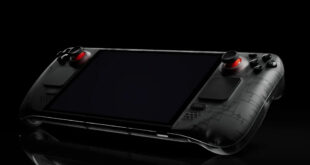
At CES earlier this month, Intel announced that it would launch a new range of high-end Core i9 CPUs, but didn’t give many details on the chips. Over the last 10 days, new details on these cores have become available — and they’re more than a bit unusual.
The new KF CPUs (as in, the Core i9-9900KF, 9700KF, etc) are identical in every respect to the “K” version of these chips, with the same clocks, TDPs, DDR4 standard support, and cache subsystem. The one difference is the integrated graphics. “KF” chips have nonfunctional GPUs, while the “K” CPUs have fully functional graphics.
When we say the only difference, by the way, we mean it. The KF CPUs are also listing for exactly the same price as the K chips, meaning that Intel has simultaneously removed features and yet not reduced the overall price. And admittedly, that seems like a crummy thing to do. One would expect the company to at least throw a few bones to the idea that features cost money, right?
Why the KF Chips Exist
It helps to keep in mind that these KF CPUs are highly unusual to start with. Starting with Sandy Bridge, Intel has included onboard graphics on all of its consumer CPUs. HEDT silicon is derived from the Xeon product family and follows the same rules. This is one of the little oddities in the CPU world: AMD did far more than Intel to popularize the idea of building a capable iGPU on-die, and spent far more energy talking up concepts like HSA and APUs — but between the two firms, a much larger percentage of AMD’s total CPU shipments lack integrated graphics.
The only reason for Intel to break one of its own rules of product segmentation in this fashion is if doing so helps the company meet demand for its 9th Generation CPU family. These KF chips are almost certainly die-recovered CPUs with bad graphics engines that Intel otherwise wouldn’t have been able to sell.
There’s no way for us to know how many CPUs![]() Intel is recovering this way, but the obvious answer is “Enough.” If there was no advantage to bringing these parts to market, they wouldn’t exist in the first place. Yes, the absolute number of cores is probably small, but Intel is also responding to tight demand allocations that have limited its ability to ship its top-end chips. Cutting price on these chips relative to their GPU-equipped brethren would likely increase demand for them, which works against the idea of using these cores to help fill a shortage.
Intel is recovering this way, but the obvious answer is “Enough.” If there was no advantage to bringing these parts to market, they wouldn’t exist in the first place. Yes, the absolute number of cores is probably small, but Intel is also responding to tight demand allocations that have limited its ability to ship its top-end chips. Cutting price on these chips relative to their GPU-equipped brethren would likely increase demand for them, which works against the idea of using these cores to help fill a shortage.
It’ll be interesting to see how availability for both sets of SKUs stacks up in retail. Intel could choose to prioritize one design or another for the retail channel, particularly if it knows its OEM customers tend to still prioritize on-die graphics, while channel customers might be much more likely to equip a CPU with a discrete GPU.
While most gamers and enthusiasts are unlikely to make much use of onboard graphics, no iGPU means no Intel QuickSync support and no using the integrated in the event of a primary GPU failure or in a secondary system at some point down the line. The KF family does not have any enhanced overclocking capabilities or expected superior performance as a result of this change.
Now Read:
- Rumors Once Again Surface That Intel Could Purchase AMD
- Intel’s Next 5GHz CPU May Lack Price Tag, Launch as Auction-Only
- Micron Will Buy Out Intel’s Share of Joint Optane Fab
Acer Gaming Laptop CES
 #Bizwhiznetwork.com Innovation ΛI |Technology News
#Bizwhiznetwork.com Innovation ΛI |Technology News




